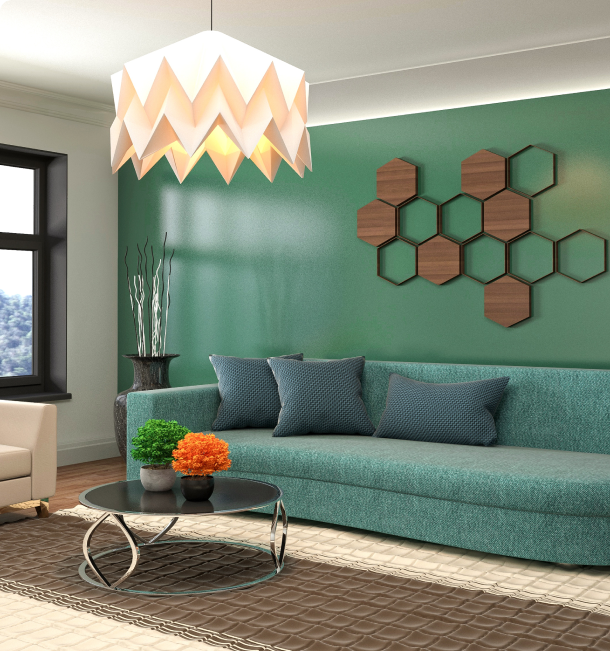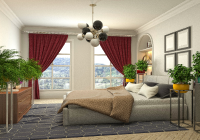
Types of Facades
Introduction
In the world of architecture, facades play a crucial role in defining the aesthetic and functional aspects of buildings. A facade is the exterior front of a building, and it can significantly influence the building’s character and energy efficiency. This article explores the different types of facades, their unique features, benefits, and the role they play in modern architecture.
Historical Context of Facades
Evolution of Facade Design
- Ancient Times: Use of natural materials like stone and wood.
- Medieval Period: Introduction of fortified facades with gothic elements.
- Renaissance to Baroque: Ornate designs with intricate details.
- Industrial Revolution: Emergence of steel and glass facades.
- Modern Era: Minimalist designs emphasizing functionality.
Influences Over Time
- Cultural Impact: How culture shapes facade aesthetics.
- Technological Advancements: Innovations in materials and construction methods.
- Environmental Considerations: Sustainability and eco-friendly designs.
Types of Facades
Traditional Facades
- Brick Facades
- Characteristics: Durability, thermal efficiency.
- Historical Significance: Widely used in residential and commercial buildings.
- Stone Facades
- Characteristics: Strength, timeless appeal.
- Historical Significance: Prominent in ancient and medieval architecture.
- Wooden Facades
- Characteristics: Warmth, natural aesthetic.
- Historical Significance: Common in traditional and rural architecture.
Modern Facades
- Glass Facades
- Characteristics: Transparency, modern look.
- Benefits: Maximizes natural light, offers panoramic views.
- Challenges: Heat gain, glare, and privacy issues.
- Metal Facades
- Characteristics: Sleek, industrial aesthetic.
- Benefits: Durability, low maintenance.
- Common Metals: Aluminum, steel, copper.
- Concrete Facades
- Characteristics: Versatility, strength.
- Benefits: Fire resistance, thermal mass.
- Uses: Residential, commercial, and industrial buildings.
- Composite Facades
- Characteristics: Combination of materials.
- Benefits: Enhanced performance and aesthetics.
- Examples: Panels combining metal, glass, and insulation materials.
Technical Specifications of Facades
Structural Integrity
- Load-Bearing Facades
- Definition: Facades that support the building structure.
- Examples: Brick and stone facades.
- Non-Load-Bearing Facades
- Definition: Facades that do not support the building structure.
- Examples: Curtain walls, cladding systems.
Thermal Performance
- Insulation Materials: Importance of thermal insulation.
- Energy Efficiency: Impact on heating and cooling costs.
- Innovations: Smart facades with dynamic insulation.
Acoustic Performance
- Sound Insulation: Materials and design for noise reduction.
- Applications: Importance in urban and commercial settings.
Fire Resistance
- Fire-Rated Materials: Regulations and safety standards.
- Design Considerations: Integration of fire-resistant features.
Applications of Facades
Residential Buildings
- Single-Family Homes: Aesthetic and functional considerations.
- Multi-Family Dwellings: Balancing privacy, light, and ventilation.
Commercial Buildings
- Office Spaces: Enhancing natural light and energy efficiency.
- Retail Spaces: Attracting customers with appealing designs.
Industrial Buildings
- Durability and Maintenance: Importance of robust materials.
- Functional Design: Facilitating industrial operations.
Institutional Buildings
- Educational Facilities: Promoting a conducive learning environment.
- Healthcare Facilities: Ensuring safety and hygiene.
Benefits of Different Facades
Aesthetic Appeal
- Architectural Identity: Creating unique building identities.
- Cultural Relevance: Reflecting local traditions and values.
Energy Efficiency
- Passive Design: Utilizing natural resources for heating and cooling.
- Sustainable Materials: Eco-friendly options for reduced environmental impact.
Cost Efficiency
- Initial Investment vs. Long-Term Savings: Balancing upfront costs with maintenance and energy savings.
- Durability: Long-lasting materials reducing replacement costs.
Challenges and Limitations
Climate Considerations
- Weather Resistance: Choosing appropriate materials for local climates.
- Thermal Comfort: Managing indoor temperatures effectively.
Maintenance Requirements
- Regular Upkeep: Importance of periodic inspections and repairs.
- Material-Specific Challenges: Issues like corrosion, decay, and cleaning.
Regulatory Compliance
- Building Codes: Adherence to local and international standards.
- Sustainability Certifications: Meeting criteria for green building certifications.
Latest Innovations in Facades
Smart Facades
- Dynamic Systems: Adaptive designs responding to environmental changes.
- Technologies: Integration of sensors and automation for optimized performance.
Green Facades
- Vertical Gardens: Incorporating greenery into facade design.
- Benefits: Improved air quality, thermal insulation, and aesthetic appeal.
Sustainable Materials
- Recycled Content: Use of recycled materials in facade construction.
- Biodegradable Options: Materials that decompose without harming the environment.
Future Prospects of Facades
Emerging Trends
- Biophilic Design: Integration of natural elements into facades.
- Net-Zero Buildings: Facades contributing to energy-neutral buildings.
Technological Advances
- 3D Printing: Customizable and efficient facade production.
- Nanotechnology: Enhanced material properties for better performance.
Global Influence
- Urbanization: Impact of rapid urban growth on facade design.
- Cultural Exchange: Blending of architectural styles across regions.
Comparative Analysis of Facade Types
Brick vs. Glass Facades
- Aesthetic Differences: Traditional vs. modern appeal.
- Performance Comparison: Thermal, acoustic, and maintenance aspects.
Metal vs. Composite Facades
- Durability and Maintenance: Longevity and care requirements.
- Cost Considerations: Initial investment and lifecycle costs.
Stone vs. Concrete Facades
- Historical Significance: Heritage and modern usage.
- Structural Properties: Load-bearing capacity and resilience.
User Guides for Facade Selection
Factors to Consider
- Climate Suitability: Choosing facades based on local weather conditions.
- Building Purpose: Aligning facade choice with building function.
- Budget Constraints: Balancing cost and quality.
Step-by-Step Selection Process
- Site Analysis: Assessing environmental factors.
- Material Research: Comparing options based on performance and aesthetics.
- Expert Consultation: Seeking advice from architects and engineers.
Conclusion
Facades are a vital aspect of architectural design, impacting both the aesthetics and functionality of buildings. With a variety of materials and designs available, selecting the right facade requires careful consideration of factors like climate, building purpose, and budget. By understanding the different types of facades and their benefits, architects and builders can create structures that are not only beautiful but also energy-efficient and sustainable.











Leave a Reply